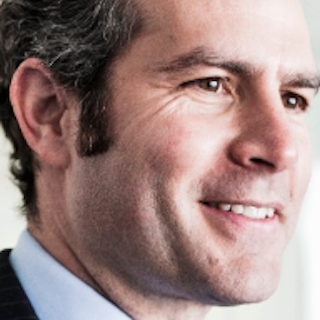Brand leadership must bridge the climate conflict if we are to accelerate change
Gonzalo Brujo, global CEO of Interbrand, explores how brand leaders must step up after COP 28. Time is running out.

The world’s leading governments will gather once again to discuss implementing transformative climate action. COP 28 will direct a much-needed spotlight on what measures countries should introduce to mitigate the climate crisis.
To change the trajectory of the climate crisis, we must all change. But at the heart of this change are a series of conflicts – between competing opinions, motivations and actions – all experienced by governments, brands and citizens.
While politicians are negotiating, businesses can be doing. Brands have a role to lead in helping their customers make more sustainable choices, but these climate conflicts are stalling the speed and urgency of action.
Advertisement
From a business and consumer perspective, this is never more apparent than in the ‘say-do’ gap. Consumers say they want more sustainable products yet don’t necessarily buy them. Without purchase data, businesses can’t make the case for more innovation. And so it goes on.
And now, according to the World Federation of Advertisers (WFA), 42% of companies have sustainability as a marketing KPI (compared with 26% in 2021), so marketers are under pressure to find ways to cut through internal conflicts. And while 80% of consumers want to make change, they often don’t know how.
So, how can marketers break through the internal challenges to build reputational value from the work that the organization is doing? And what gets in the way of consumers making the changes they want to? There is latent demand for better - so brands can transform that latency into new demand.
Change the language
How often do we see businesses talking about the number of tonnes of carbon being offset to explain to customers their progress? This science-speak is as obstructive as it is confusing. Sustainability is discussed in much the same way as pre-Apple era technology when companies selling devices flagged how many bits, bytes, or RAM they possessed – terms that meant nothing to most shoppers.
Today, much of companies’ climate narrative is dictated by the ‘supply side’ – companies, NGOs, scientists and policymakers. While it may be repeated on the ‘demand side’ with the best intentions, this technical language causes confusion or makes people suspicious. If customers fear they’re being conned, it prevents them from taking positive action.
But science speak is one of the easiest of the conflicts to fix if brands use the tools and principles of marketing and communication to shift the narrative from the supply side to the demand side. By using more apparent, more inclusive and meaningful language, brands can help compel people rather than bamboozle them.
Advertisement
For example, luxury retailer Mulberry’s resale platform frames circularity as “discover pre-loved and vintage bags, expertly authenticated and refurbished by the artisans of our Somerset repairs center.”
Not a gram of CO2 in sight, though CO2 reduction is the brand’s overall sustainability aim.
Avoiding fragmentation
Despite shifting climate agendas, legislation is coming – potentially most challenging for the bigger players cutting across multiple territories. Keeping up with the guidelines is no mean feat and is difficult to navigate.
It is also something that businesses can’t control. But other things are within the brand’s control. Mixed messaging is a huge problem. If the messaging changes too often, people don’t know what to believe and risk disengaging entirely, stymying any positive behavior change.
This is where brands should work with customers to find a universality of language that rises above the finger-pointing and results in motivating messaging.
Brands are often making great advancements in “back-office” parts of the business that don’t directly touch the customer, for example, through their supply chain – so their actions are buried in ESG or investor reports. As well as focusing on the investor community, this activity should be directed – and talked about – in front of the house. For instance, Ikea has turned operational wins, such as how it sources and uses wood, into customer-facing messaging in-store.
Suggested newsletters for you
What we know from our brand integrity and ethics work – that very much applies in this climate conflict space – is that brands must be clear about what they can deliver on and then consistently deliver on the commitments they make across the totality of the brand. We also know that if brands can show leadership to deliver ‘above expectation’ and show intent to do ‘better,’ this will have a positive impact on reputation - e.g., do more than just comply with regulation (which is challenging due to new regulation coming thick and fast, and differing from country to country).
Sharing Success
The fear of not getting it right – of over-claiming or focusing on the wrong thing – and being called out for it means many brands are scared to put their heads above the parapet.
But brands can reframe their approach – concentrating on what they can stand for, not what they can’t. For example, this could mean running an employee program – investigating what drives them to be more climate-conscious and building better levers into the employee experience. Brand culture plays a significant role in determining what change is in the brand’s remit.
Businesses don’t have to have everything right, right now. We are all in a process of change that requires difficult trade-offs and decisions. But brands must do something and know where they are aiming. So, whether it’s KitKat’s 80% recycled plastic wrapper or Nespresso’s 100,000 collection points for customers to recycle their capsules, clear choices and steps can be taken and shared.
For Nespresso, it has the added benefit of giving customers an (easy) job to do, which helps form strong bonds by involving them in the process and addressing that latency – “I want to do something, but I don’t know how.” Similarly, Ikea’s move to a more circular business model saw it offer 18m spare parts to customers in 2021 to extend the life of its products – while also extending its customer relationships. What’s smart about both these moves is that they are a win-win for customer and brand.
We may be living through economic turmoil with extreme pressures on people, but it’s worth remembering that making more sustainable choices can also be the most economical.
Brands should remember that the desire to do the right thing and make sustainable choices doesn’t go away in times of hardship. These become compounding issues - “I was making a more sustainable choice, but now I can’t afford to, so I feel twice as bad.” But brands can give their customers useful options – how to make food last longer, cook with less energy, and offer spare parts.
We are all entering a new era of sustainable growth, balancing the immediate need of the business with long-term sustainability. By enlisting consumers in the outcome, brands can help people feel they are participating in a solution.
Brands need to shift perspective from internal to external, from corporate to human, from proprietary to inclusive, from sharing more about the progress the company is making to helping people be and do better themselves.

